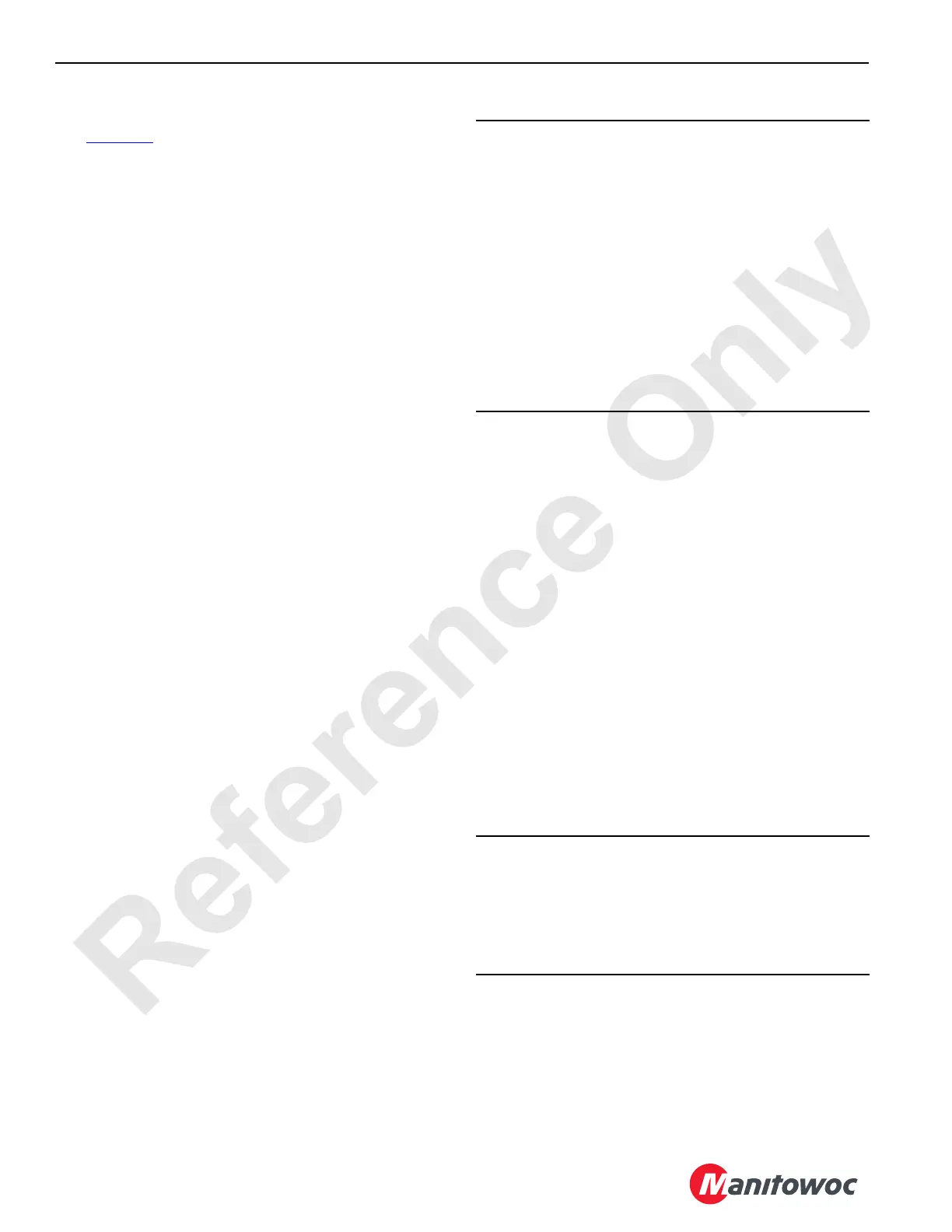POWER TRAIN 2250 SERVICE/MAINTENANCE MANUAL
7-6
Published 07-19-16, Control # 249-01
ENGINE AIR CLEANER MAINTENANCE
See Figure 7-4 for the following.
The air cleaner (1) is connected to the engine air intake (17)
with a rubber elbow reducer (3), clamps (4), steel tubes (5),
a rubber elbow (6), and a rubber reducer (7). Servicing the
air cleaner is important because either of the following
conditions can cause engine damage:
• Clogged air cleaner filters can prevent adequate air flow
to the engine, causing poor starting and increased
exhaust emissions.
• An improperly installed or damaged air cleaner can
allow dirty air to be drawn directly into the engine.
Inspection
To maintain engine protection and filter service life, inspect
the following areas at regular intervals
.
Daily
Check the service indicator (8) with the engine running. The
indicator gives a visual indication when it is time to replace
the filters:
• A yellow flag in the indicator window (9) extends as the
filters become plugged. Replace the filters when the
yellow indicator reaches the red zone at the end of the
indicator.
• The yellow flag remains locked in place after the engine
is stopped. When the filters are replaced, push the reset
button (10) in to reset the indicator.
Weekly
1. Inspect the reducers (3 and 7) between the air cleaner
and the engine for cracks or other damage that might
allow unfiltered air to enter the engine. Replace worn or
damaged parts.
2. Check the housing (11) for dents or other damage that
may allow unfiltered air to enter the engine. Replace the
housing if it is damaged.
3. Check for loose clamps (4). Tighten them if necessary.
4. Inspect the intake/pre-cleaner (2) for obstructions.
Clean the intake as required.
5. Inspect the dust ejector (16) for damage. Replace the
ejector if necessary.
Service
1. Unlatch and remove the service cover (12). The
primary (13) and secondary (14) filters should be
removed gently to prevent dislodging dust. There will be
some initial resistance, similar to breaking the seal on a
jar. Using the tabs on the filters, move the end of the
primary filter back and forth to break the seal.
2. Using the tabs, pull each primary filter out of the
housing (9). Avoid knocking the filter against the
housing.
3. Using the tabs, pull each secondary filter out of the
housing. Avoid knocking the filter against the housing.
NOTE: The secondary element should be replaced every
third time the primary element is replaced. Inspect
the secondary element and replace it if necessary.
4. Use a clean cloth to wipe clean the sealing surfaces and
inside of the housing. Dust on the sealing surfaces could
render the seal ineffective and cause leakage. Remove
all contamination before installing the new filters.
5. Wipe the inside of the outlet tube with a clean cloth. Be
careful not to damage the sealing area of the tube.
6. Visually inspect the old filters for any sign of leaks. A
streak of dust on the clean side of the filter is a sign.
Remove any cause of leaks before installing a new filter.
CAUTION
Engine Damage!
Drawing contaminants into the engine while it is running
will damage the engine.
Never operate the engine without the air cleaner. Stop the
engine before servicing the air cleaner.
Clean the fittings, the mounting hardware, and the area
around the component(s) to be removed.
Replace the secondary filter as quickly as possible to
prevent engine ingestion of contaminants. Do not reuse
old filters. Discard old filters and install new ones. Using
compressed air to clean an old filter elements voids the
warranty and can degrade or damage the filter media,
leading to a malfunction.
CAUTION
Engine Damage!
Dirt transferred to the inside of the outlet tube will reach
the engine and cause damage.
Clean the inside of the outlet tube to prevent dirt from
entering the engine.

